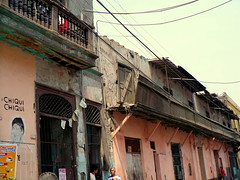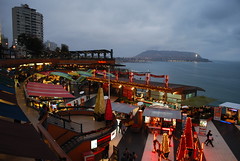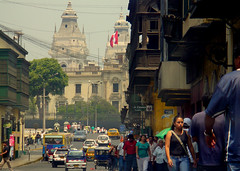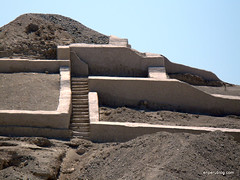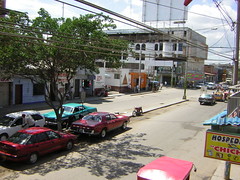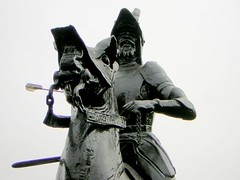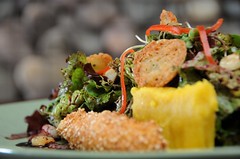We have embarked on a trip to the central rainforest of Peru, which will take us up over the Andes from Lima into areas formally controlled by the Shining Path terrorists and rebels and into the rainforest.
The journey, by car, takes us up over 5000 metres above sea level on a winding mountain road, with spectacular scenery.
Category: "Travel and Places"
Santiago de Surco
Surco was originally a vacation spot during Spanish colonial times, Spaniards in Lima would visit for some peace and quiet. That was before the metropolis of Lima swallowed this once small town and it became one of the seven city districts created after independence.
But there are still signs of what once was.
Parque de la Amistad, Surco
The Parque de la Amistad, or Park of Peace/Friendship is located in cuadra 21 of Av. Caminos del Inca, in Santiago de Surco. Although it is not quite on the tourist trail, it is a significant park in the municipality of Surco, and some history is tied up in the park.
Goodbye Huascaran
Today the World Heritage Body rejected a motion calling for cuts in carbon emissions after heavy lobbying from the Bush administration.
There are 125 Unesco World Heritage sites that are under threat from global warming, some of which are in Peru, including the area I visited a couple of weeks ago – Huascaran National Park.
Lunch at Cordano
The Plaza de Armas was sealed off today to prevent protesters approaching the presidential palace. Only people wanting access local business and tourists were allowed through into the plaza, so it was strangely quiet when we passed through to go to lunch to celebrate a family event.
We ate at the famous “Cordano” a small bar/restaurant to the right of the Palacio del Gobierno. This bar was frequented by the rich and powerful in Lima’s heyday and is still a favourite for congressmen and local businessmen, as well as more well-informed tourists.
The Chavín culture
A full two-thousand years before the rise of the Inca empire another culture ruled most of the central Andes and spread their influence yet further. The Chavín, from their capital Chavín de Huántar in modern day Ancash, and with their roots in the very first civilisations and city-states in the Americas such as Caral, Sechín and Ventarrón, created what was Peru’s very first empire. In doing so, they instilled an idea in Andean peoples that lasted until the arrival of the Spanish – rule under one government in one society with one common culture is beneficial in this harshest of environments, that better and central organisation would bring better crop yeilds, as well as more free time for monument building, religion and science.
Pastoruri
We left at 5am to climb Pastoruri (one of the more tiny peaks at a mere 5,240m / 17,187ft). We had to leave so early as there were protests in the town against something or other and all the roads would be blocked off. Such protests are commonplace in the Andes.
On the journey we stopped at the valley of Pachacoto to see the Puya Raimondi plants. These plants are bizarre looking and thought to be the oldest plant species on the planet. It lives for 100 years and flowers once, dieing immediately afterwards. Nearby were some old rock paintings.
The first few photos show the valley, the Puyas Raymondii and the rock paintings.
Huaraz
Huaraz is the largest city in the valley, the most industrial and most wealthy. From the hills that surround the city you can see that if fills this part of the valley completely. Being the largest city in Ancash though doesn’t make it modern. It is still relatively poor and many traditional adobe whitewashed houses and unpaved streets.
Caraz
We arrived in Caraz in the late afternoon, it caters for mountaineers but hasn’t got a lot else going for it. The town was hastily constructed after the devastating earthquake so isn’t the most pretty or traditional.
The photos show how lots of poor small towns look in rural Peru.
Lagunas de Llanganuco
On the road from Yungay to Caraz there is an access road to the lagoons under Huascaran.
Chinancocha is a laguna that stands at an altitude of 3850m and holds 1144300m3 of water.
Yungay
Could you imagine the ground trembling beneath your feet with such tremendous force that you could barely stand? Then have it stop abruptly with just enough time to get outside to apparent safety before a deep rumbling again shook the ground and darkness enveloped you? Nor could the little town of Yungay and its 25,000 inhabitants imagine they would be victims of Peru’s worst ever natural disaster.
Carhuaz
We arrived in Huaraz at around 5am, and as mentioned in the previous entry, we booked ourselves on a tour around the area. Unfortunately, after little sleep on the bus ride here, we had to leave the hotel at 9am. The first stop was a small Andean town along the valley called Carhuaz.



